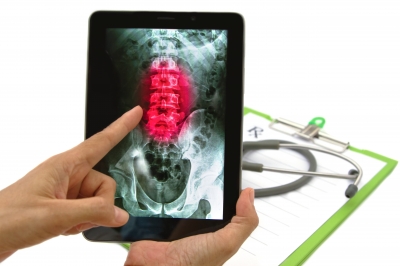How You Can Treat Your Own Low Back Pain
Written By: Paul Kochoa, PT, DPT, OCS, CGFI
This is how I think the story goes:
Once upon a time, there was a patient in New Zealand (updated 10/23/13) who had back pain, so he went to go see his physiotherapist. He was in pain and couldn’t walk very well, the pain started in his back, but also ran down his leg. The physiotherapist brought him into a treatment room, and had him lie down on his stomach, all with the intention to examine his back. However, this therapist was a busy man. He got called away from the patient for another issue, and forgot about him. An hour later, he suddenly remembers that patient and returns to find him without pain or leg symptoms. A miracle?
This is the “urban legend” as to how the McKenzie Method started. Basically, it’s known as the McKenzie Method of Mechanical Diagnosis and Treatment. This method of evaluation and diagnosis has been proven to be very effective in treating back and neck problems. This system classifies disorders into three syndromes: derangement, dysfunction, and posture syndromes. It can also differentiate between mechanical and non-mechanical problems and dysfunctions by assessing the patient’s responses to directional movement.
In summary, the derangement syndrome is when some tissue or structure is out of place and blocks movement, causing pain (most commonly a lumbar intervertebral disc protrudes into the joint space).
The dysfunction syndrome is when tissues become shortened or tight over time, and then are stretched, causing pain (this is like when you have a cast to immobilize a joint, but then have it removed and you experience tightness and decreased range of motion).
The posture syndrome is when otherwise normal tissue gets placed under abnormal stresses (like when you pull back your finger really far, it’ll hurt, but when you let go, it should go back to normal).
 If your back hurts, a physical therapist can determine through the evaluation, physical exam, and movement testing which classification you fit in, or if you don’t fit into any of them. Treatment usually includes some exercises (physical therapy is PHYSICAL, after all), modalities if needed, manual techniques, and the most important thing (in my opinion), patient education. What’s the use in doing things in your physical therapy session only to repeat the things that made your back hurt in the first place?
If your back hurts, a physical therapist can determine through the evaluation, physical exam, and movement testing which classification you fit in, or if you don’t fit into any of them. Treatment usually includes some exercises (physical therapy is PHYSICAL, after all), modalities if needed, manual techniques, and the most important thing (in my opinion), patient education. What’s the use in doing things in your physical therapy session only to repeat the things that made your back hurt in the first place?
Treating your own back is just as important as going to a physical therapist and having them work on it. When a physical therapist instructs you on certain movements or exercises to address your problems, they generally include a reversal of prolonged static postural positions. Our industrialized society places us in positions that are bad for the back. For example: prolonged sitting at a computer workstation, lifting and carrying boxes, sitting and answering emails on your blackberry…
If you have an injury, all those positions and activities create pain where there was none before. Next time you’re in a public place (on the train, on a bus), look around and see how people are sitting. Usually they’re slouched, shoulders rounded, and head/chin jutting forward. You can start with trying to get out of a poor posture position and working on sitting up straighter. Reversal of bad positions and getting into better positions is a start. The road to recovery starts with addressing the everyday forces on your body and making modifications. With your physical therapist and you working as a team, you, too, can treat your own back.
For more information, contact Professional Physical Therapy and Training and speak to a physical therapist. Our offices are located in the Madison and Summit Area YMCAs in New Jersey. You do not need to have a YMCA membership to visit with us.
Image courtesy of Praisaeng / FreeDigitalPhotos.net